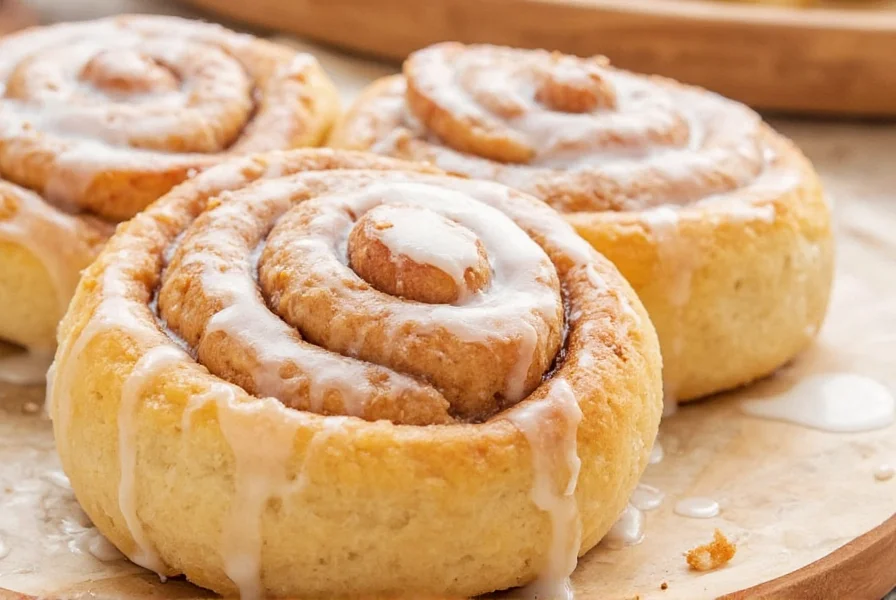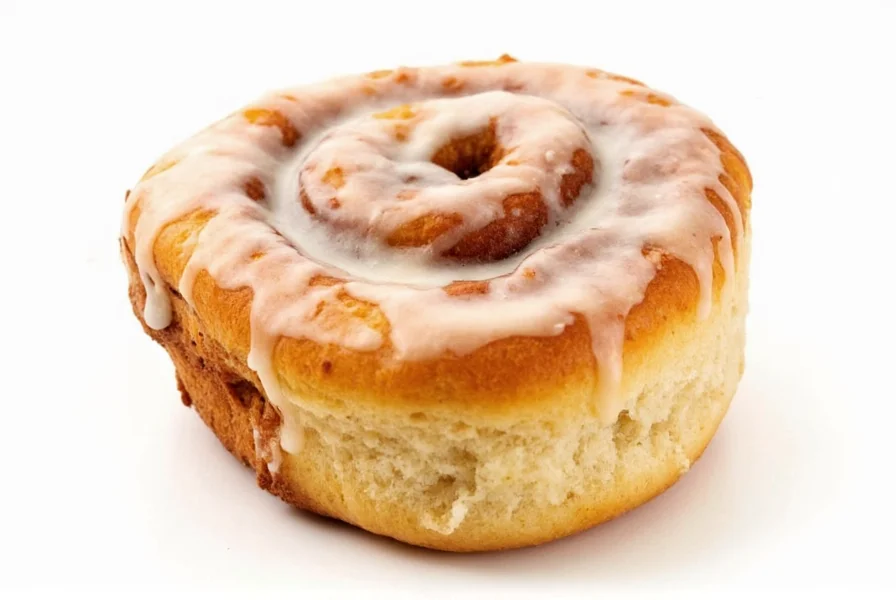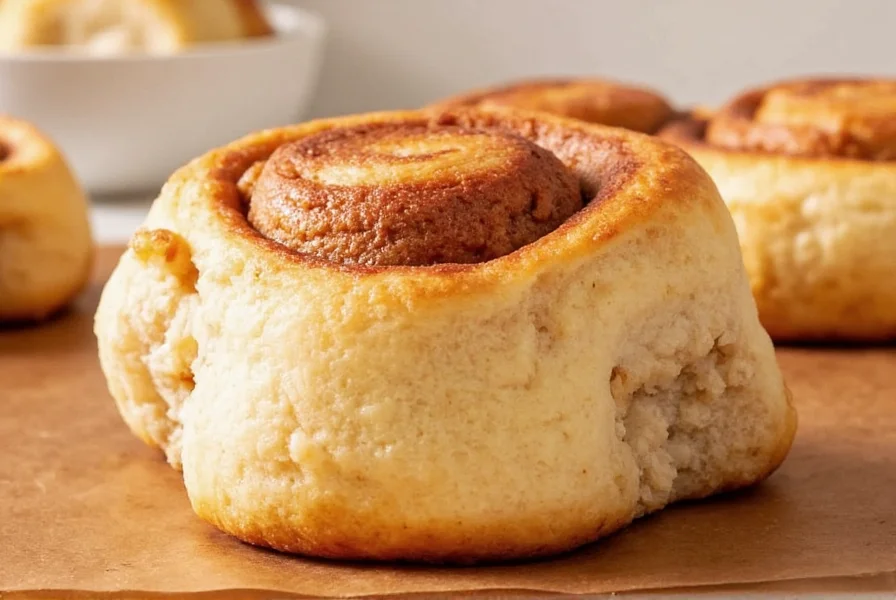Understanding the calorie content of cinnamon rolls is essential for those tracking their nutritional intake or making informed dietary choices. These popular sweet treats can fit into a balanced diet when enjoyed in moderation, but their calorie density varies considerably depending on multiple factors.
Factors That Affect Cinnamon Roll Calorie Count
The calorie content of cinnamon rolls isn't uniform across all varieties. Several key elements influence the final count:
- Size and portion - This is the most significant factor. A small homemade roll differs dramatically from a large bakery-style version
- Dough composition - Enriched dough with eggs and butter contains more calories than basic yeast rolls
- Filling ingredients - Brown sugar, butter, and additional sweeteners increase calorie density
- Icing or glaze - Cream cheese frosting adds substantial calories compared to simple powdered sugar glaze
- Preparation method - Baking versus frying affects final calorie content
Nutritional Breakdown of Typical Cinnamon Rolls
Below is a comparison of nutritional information for different cinnamon roll varieties. These values represent average counts based on standard recipes and commercial products.
| Type of Cinnamon Roll | Size | Calories | Total Fat (g) | Carbohydrates (g) | Sugars (g) |
|---|---|---|---|---|---|
| Homemade (basic recipe) | 2.5 oz (70g) | 180-220 | 6-8 | 30-35 | 15-20 |
| Store-bought (frozen) | 3 oz (85g) | 250-300 | 8-10 | 40-45 | 20-25 |
| Bakery-style (medium) | 4.5 oz (128g) | 350-450 | 12-16 | 55-65 | 30-35 |
| Cinnabon Classic Roll | 5.4 oz (154g) | 880 | 38 | 133 | 69 |

Comparing Homemade vs. Commercial Cinnamon Rolls
When evaluating calories in cinnamon rolls, it's important to distinguish between homemade and commercial varieties:
Homemade cinnamon rolls typically offer more control over ingredients and portion size. Using reduced-fat dairy, less sugar, or alternative sweeteners can lower the calorie count while maintaining flavor. A basic homemade roll without heavy icing generally falls in the 180-250 calorie range.
Commercial cinnamon rolls vary widely. Supermarket frozen varieties often contain 250-350 calories per roll, while specialty bakery items can exceed 500 calories. Chain restaurant versions like Cinnabon's products are notably higher in calories due to larger portions and richer ingredients.
When analyzing commercial products, always check the nutrition facts label as serving sizes can be misleading. Many packages contain multiple servings despite being marketed as a single roll.
Understanding Cinnamon Rolls in Your Daily Calorie Budget
For context, the average adult requires approximately 2,000-2,500 calories per day, though individual needs vary based on age, gender, activity level, and health goals.
A single standard cinnamon roll represents:
- 9-11% of a 2,000-calorie daily diet (for a 180-220 calorie roll)
- 12-15% of a 2,000-calorie daily diet (for a 250-300 calorie roll)
- Up to 44% of a 2,000-calorie daily diet (for a large bakery-style roll)
Nutritionists generally recommend that discretionary calories (those from foods with limited nutritional value) should comprise no more than 10% of your daily intake. This means that for many people, a single large cinnamon roll could exceed the recommended daily allowance for treats.
Lower-Calorie Cinnamon Roll Options
If you're watching your calorie intake but still want to enjoy cinnamon rolls, consider these modifications:
- Reduce portion size - Make smaller rolls (1.5-2 oz) to naturally lower calorie content
- Modify the filling - Use less sugar or substitute with calorie-free sweeteners
- Lighten the dough - Replace some butter with unsweetened applesauce or mashed banana
- Skip the icing - Dust with powdered sugar instead of using cream cheese frosting
- Add protein - Incorporate protein powder into the dough to increase satiety
These adjustments can reduce calorie content by 25-40% while preserving much of the flavor and texture that makes cinnamon rolls enjoyable.

Reading Nutrition Labels for Accurate Calorie Information
When purchasing commercial cinnamon rolls, pay close attention to nutrition labels to avoid miscalculating your intake. Many products:
- List "per serving" when one package contains multiple servings
- Use smaller serving sizes to make calorie counts appear lower
- Don't account for additional toppings or spreads you might add
Always check the total package nutrition information rather than just the per-serving data to understand the complete calorie content.
Frequently Asked Questions About Cinnamon Roll Calories
How many calories are in a small homemade cinnamon roll?
A small homemade cinnamon roll (approximately 1.5-2 ounces or 40-55g) typically contains 120-160 calories. This assumes a basic recipe without heavy icing. The exact count depends on specific ingredients and portion size.
Are store-bought cinnamon rolls higher in calories than homemade?
Generally yes. Store-bought cinnamon rolls often contain more calories than homemade versions due to added preservatives, higher sugar content, and richer ingredients. A typical frozen supermarket roll (3 oz) contains 250-300 calories compared to 180-220 for a similar-sized homemade roll.
How can I reduce calories in cinnamon rolls without sacrificing taste?
You can reduce calories by using less sugar in the filling, substituting some butter with unsweetened applesauce, making smaller portions, and using a light dusting of powdered sugar instead of heavy cream cheese icing. These modifications can lower calorie content by 25-40% while maintaining enjoyable flavor.
Do cinnamon rolls from restaurants have more calories than store-bought versions?
Yes, restaurant and bakery cinnamon rolls typically contain significantly more calories than store-bought versions. A standard bakery-style roll often ranges from 350-500 calories, while chain restaurant versions like Cinnabon's classic roll contain approximately 880 calories due to larger portions and richer ingredients.
How do cinnamon roll calories compare to other breakfast pastries?
Cinnamon rolls generally contain more calories than many other breakfast pastries. A standard cinnamon roll (180-220 calories) has more calories than a plain bagel (270 for a large one, but less for standard size), but fewer than a large filled Danish (350-450 calories) or a chocolate croissant (330-400 calories). The cream cheese icing significantly increases the calorie count compared to simpler pastries.











 浙公网安备
33010002000092号
浙公网安备
33010002000092号 浙B2-20120091-4
浙B2-20120091-4